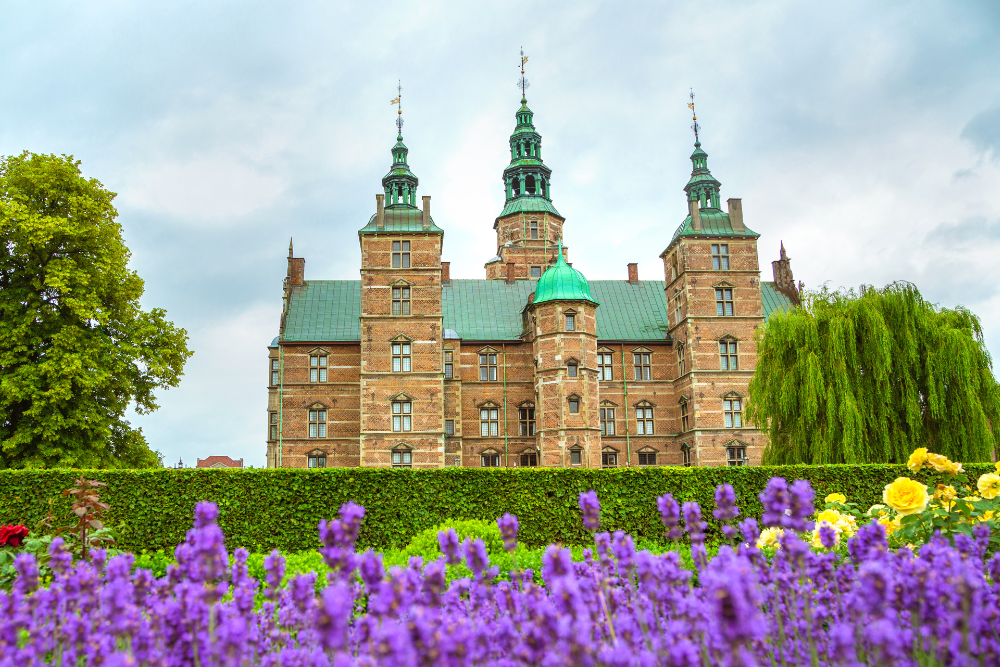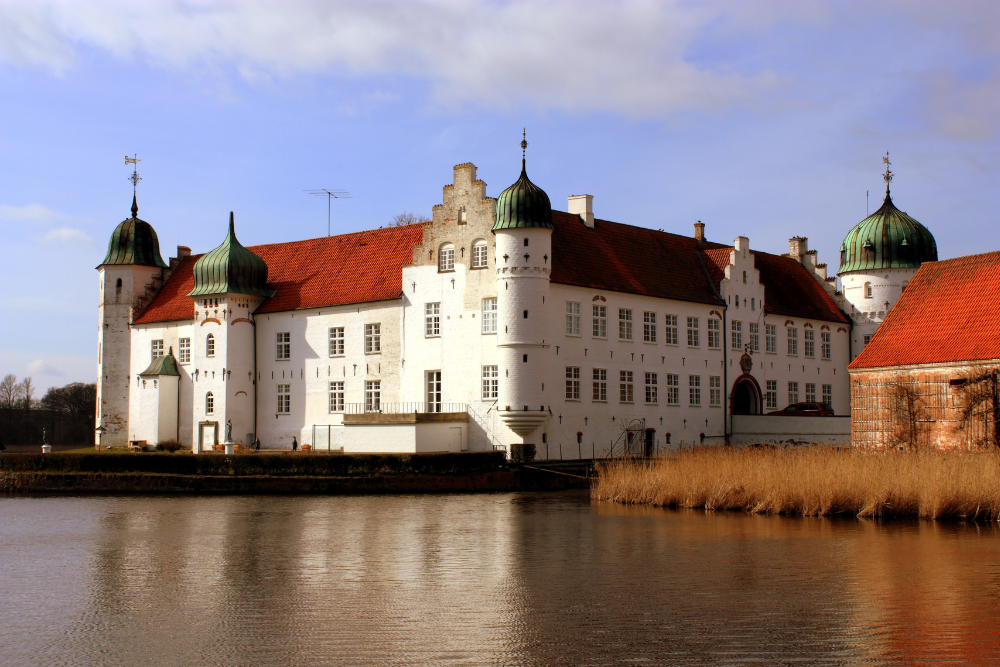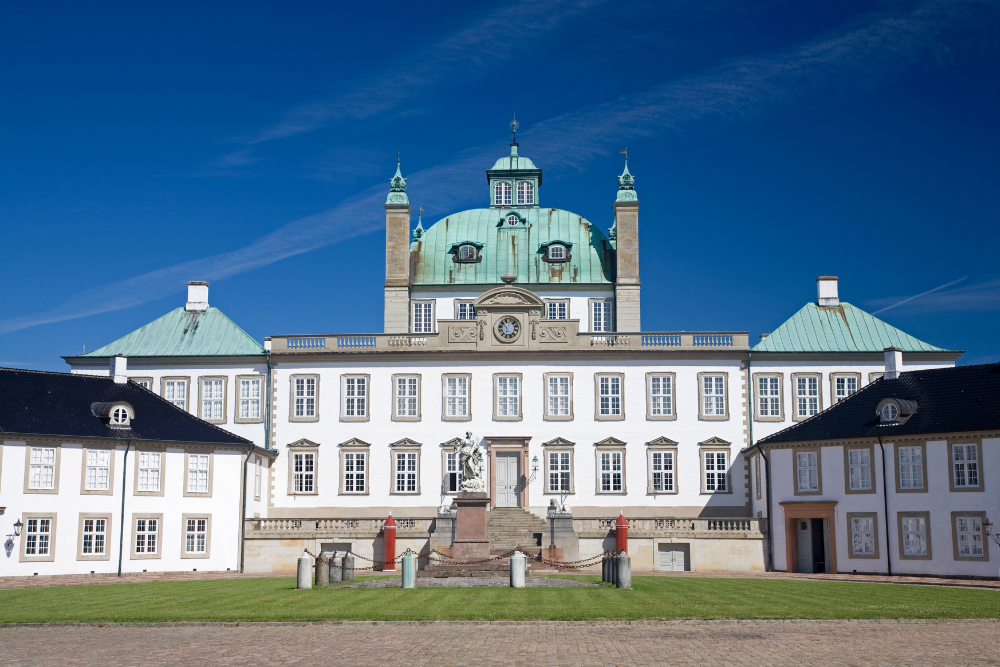Denmark is a country rich in history and royal heritage, and its castles and palaces provide a glimpse into its fascinating past. From the grandeur of royal residences to the fortress-like charm of medieval castles, Denmark’s castles offer a wealth of cultural, historical, and architectural experiences. Here’s a guide to the top 5 castles and palaces in Denmark that every history lover and traveler should visit.
1. Frederiksborg Castle: The Fairytale Castle of Denmark

Located in Hillerød, just north of Copenhagen, Frederiksborg Castle is often regarded as one of the most beautiful Renaissance castles in Denmark. Built in the early 17th century by King Christian IV, this magnificent castle is set on three islands in a serene lake and is surrounded by breathtaking gardens.
- What to see:
- The National History Museum, housed within the castle, is one of Denmark’s most important museums, showcasing the country’s royal history and the lives of its monarchs through stunning portraits, royal furniture, and artifacts.
- The Castle Chapel, with its beautiful Baroque interior, is another highlight of Frederiksborg.
- Wander through the formal gardens, which are designed in the French Baroque style, complete with manicured lawns, flower beds, and ornamental fountains.
- Best time to visit: Spring and summer, when the gardens are in full bloom and the lake surrounding the castle offers picturesque reflections of the building.
2. Kronborg Castle: The Castle of Hamlet

Kronborg Castle, located in Helsingør at the northern tip of Zealand, is one of Denmark’s most iconic castles and is famously known as the setting for Shakespeare’s play Hamlet. The castle’s strategic location at the entrance to the Øresund Strait made it a vital fortress in the Middle Ages, guarding the waters between Denmark and Sweden.
- What to see:
- The castle’s grand halls, including the King’s Chamber and the Great Hall, offer a fascinating glimpse into the life of Danish royalty in the 16th and 17th centuries.
- The underground casemates of the castle, once used as storage and soldier quarters, are now home to a museum and provide a spooky atmosphere.
- Don’t miss the breathtaking views of the Øresund Strait from the castle’s ramparts, where you can see Sweden just across the water.
- Best time to visit: Summer months are great for enjoying the outdoor spaces and watching live performances of Hamlet, which are staged at the castle during the annual Shakespeare Festival.
3. Amalienborg Palace: The Royal Residence in Copenhagen

Amalienborg Palace is the winter residence of the Danish royal family and one of the most famous palaces in Copenhagen. Located in the heart of the city, Amalienborg consists of four identical Rococo-style palaces surrounding a central courtyard. The palace is the home of the Danish monarch and offers visitors a chance to witness the changing of the guard ceremony.
- What to see:
- The Amalienborg Museum is located in one of the palaces and gives visitors a look into royal life through exhibits about the Danish monarchy, including royal portraits, furniture, and clothing.
- The Changing of the Guard ceremony takes place daily at noon, offering a chance to witness a time-honored royal tradition.
- The royal chapel inside the palace complex is a peaceful and beautiful space for reflection.
- Best time to visit: The Changing of the Guard ceremony is particularly popular during summer, but the palace is open year-round.
4. Rosenborg Castle: A Glimpse of Royal Splendor
Situated in the heart of Copenhagen’s King’s Garden (Kongens Have), Rosenborg Castle is a Renaissance masterpiece built by King Christian IV in the early 17th century. This royal residence is now a museum showcasing Denmark’s royal treasures, including the famous Crown Jewels.
- What to see:
- The Crown Jewels and Royal Regalia are among the most important highlights of Rosenborg, with the royal crowns, scepters, and coronation gowns on display.
- The King’s Chambers offer an insight into the royal lifestyle, decorated with intricate tapestries, paintings, and furniture from the Danish Renaissance.
- The castle’s beautiful gardens, with their meticulously manicured lawns and flowerbeds, provide a peaceful escape from the hustle and bustle of the city.
- Best time to visit: Spring and summer when the garden is in full bloom, and you can enjoy the surrounding park in pleasant weather.
5. Egeskov Castle: The Perfectly Preserved Renaissance Fortress
Egeskov Castle is one of Europe’s best-preserved Renaissance water castles, located in the southern part of Funen island. Built in 1554, this castle is set on a small island surrounded by a moat and is known for its impressive architecture, beautiful gardens, and unique exhibitions.
- What to see:
- The castle’s interior is home to historical exhibitions, including antique furniture, royal portraits, and displays about the history of the estate.
- The Castle Gardens are spectacular, with manicured flower beds, a hedge maze, and themed gardens like the Rose Garden and the Water Garden.
- Explore the Automobile Museum, which features a vast collection of vintage cars, and the Aviation Museum, which showcases rare aircraft and aviation history.
- Best time to visit: Late spring to early autumn, when the gardens are at their most vibrant, and outdoor activities are most enjoyable.
Bonus Castle to Visit: Koldinghus
While not as famous as the top five listed here, Koldinghus in Kolding is a stunning castle with a unique history. Originally built as a royal residence in the 13th century, Koldinghus later became a military fortress and even a ruined building before it was restored and turned into a museum. The museum hosts a range of exhibitions on Danish history, art, and design.
- What to see: Explore the museum’s collections of medieval armor, paintings, and furniture, and enjoy the spectacular panoramic views of the surrounding town and countryside from the castle towers.
- Best time to visit: Year-round, but particularly in spring and autumn when the surrounding nature offers beautiful views.
Conclusion
Denmark’s castles and palaces offer a fascinating journey through the country’s royal history, showcasing the splendor, architecture, and legacy of the Danish monarchy. Whether you’re wandering through the Renaissance halls of Frederiksborg, experiencing the Shakespearean atmosphere at Kronborg, or marveling at the treasures of Rosenborg, each of these castles promises a unique experience that will leave you with unforgettable memories. Plan your visit to these royal landmarks to step back in time and explore the rich cultural heritage of Denmark.












